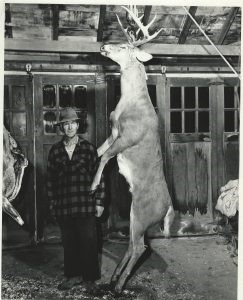Today’s tip is merely a different way of looking at things. We’ve been trained to look for and truly study deer and their sign, as well as topography and habitat types. That’s all sincerely invaluable.
Ever think about studying other animals, as well? Want to know how deer will use the topography? Go into any area with both topography and livestock. The livestock trails will tell you exactly how deer travel topography.
Want to know if the weather conditions are encouraging or discouraging overall deer movement levels? Watching how active or inactive small game and/or livestock is often provides a truly educated guess.
How do the deer use cover types for comfort? Watch the livestock, as they tell you every time it gets nasty, overly hot or most any significant weather event.

Want to start getting a bit of a feel for where deer like to sign post (rubs and scrapes)? Watching what dogs pee on and the traits those spots have (things that stick out visually, in areas other dogs may pass) actually reveal shared traits for sign posting.
In my own house, merely watching where the three dogs “bed” reveals a ton about dominance and how it both plays out and is slightly fluid. The most aggressive and strongest of the three dogs takes the prime bedding spot. The other two will use it, just as more than one mature buck can and, assuming a good population of mature bucks is present, often do bed in the same generally area, when the Mr. Big isn’t bedding there for whatever reason, but he takes it back whenever he wants, just like my more dominant of the three dogs.
Heck, though with a twist, it even almost applies when tracking deer. Keeping eyes and ears open for birds that scavenge off of kills has helped me find more than one or two poorly hit deer over the years, as well as actively using my nose to smell them, but that’s a different topic for a different time.
Truth be told, there’s some flaws to this. In reality, everything dogs, livestock and small game does will not apply perfectly to the deer world. That said, merely opening our minds to the fact that most animals want the same things (food, water, comfort, an illusion of safety and breeding opportunities) as deer gives us an entirely new world to explore and get useful, applicable knowledge from.
No, I am NOT suggesting we study these animals to the point we do deer, to increase our deer hunting and management skills. Speaking for myself, the simple realization that other animals answer a lot of deer related questions I have and keeping my mind and eyes open to that has honestly helped me quite a bit over the years.
Hopefully, it can you as well. If not, merely pitch it, my friends.
MORE CONTENT FROM D&DH:


